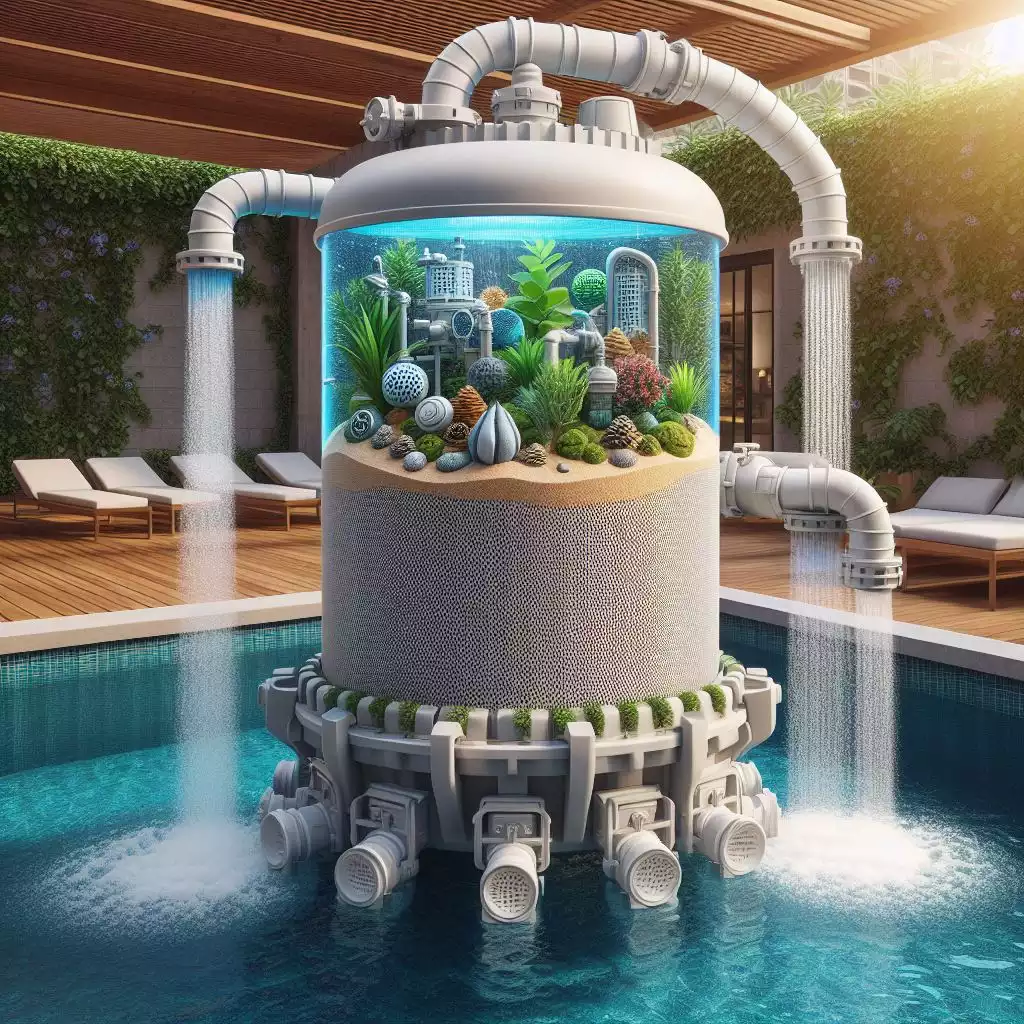A swimming pool can be an oasis of relaxation and enjoyment, but if it has been sitting unused for an extended period, reviving it can pose some challenges. One essential component that often requires attention is the pool sand filter. In this article, we will explore the key considerations and tips for first-time use of a long-inactive pool sand filter.

Understanding the Pool Sand Filter System
Before delving into the first-time use, it’s crucial to understand the basic workings of a pool sand filter. The system typically consists of a tank filled with specially graded sand, a multi-port valve, and a pump. Water is circulated through the sand, trapping debris and contaminants, while clean water returns to the pool.
1. Inspection and Maintenance
a. Visual Inspection
Start by visually inspecting the entire pool sand filter system. Check for any visible damage, leaks, or signs of wear and tear. Replace any damaged components or seals before proceeding.
b. Lubricate O-Rings
Apply a silicone-based lubricant to the O-rings of the multi-port valve. This helps create a proper seal, preventing leaks and ensuring smooth operation.
c. Tighten Connections
Ensure that all connections, including pipes and fittings, are securely tightened. Loose connections can lead to inefficiencies and potential leaks.
2. Backwashing the Filter
a. Backwash Cycle
Initiate a backwash cycle to clean the sand and remove any accumulated debris. Follow the manufacturer’s instructions for your specific pool sand filter model.
b. Monitor Backwash Water
Pay attention to the water expelled during the backwash process. Initially, the water may be cloudy, but as the filter becomes cleaner, it should gradually clear up. Once the water runs clear, the backwash cycle is complete.
3. Filling the Pool and Priming the Pump
a. Fill the Pool
Before starting the pool sand filter, ensure the pool is filled to the appropriate level. A proper water level is crucial for optimal filter operation.
b. Prime the Pump
Prime the pump by ensuring it is filled with water. This helps create the necessary suction for the filter system to function efficiently. Follow the manufacturer’s guidelines for your specific pump model.
4. Circulating the Water
a. Normal Filtration Mode
Switch the multi-port valve to the normal filtration mode. Allow the system to run for several hours to circulate and filter the water thoroughly.
b. Monitor Pressure Gauge
Keep an eye on the pressure gauge. An increase in pressure indicates that the filter is capturing debris, and a backwash may be required.
5. Water Testing and Chemical Balancing
a. Test Water Parameters
Test the pool water for key parameters such as pH, chlorine levels, and alkalinity. Adjust these levels to ensure a safe and comfortable swimming environment.
b. Shock Treatment
Consider administering a shock treatment to eliminate any remaining contaminants and restore water clarity.
6. Regular Maintenance Routin
a. Schedule Regular Backwashing
Establish a routine for regular backwashing based on the pool’s usage and water conditions. This helps maintain the efficiency of the pool sand filter.
b. Inspect and Clean Skimmer Baskets
Regularly inspect and clean the skimmer baskets to prevent debris from reaching the filter prematurely.
Conclusion
Reviving a long-inactive pool and its sand filter requires patience and attention to detail. By following these tips, you can ensure a smooth first-time use of your pool sand filter and pave the way for a clean, clear, and inviting swimming environment. Regular maintenance and water testing will further contribute to the longevity of your pool system.